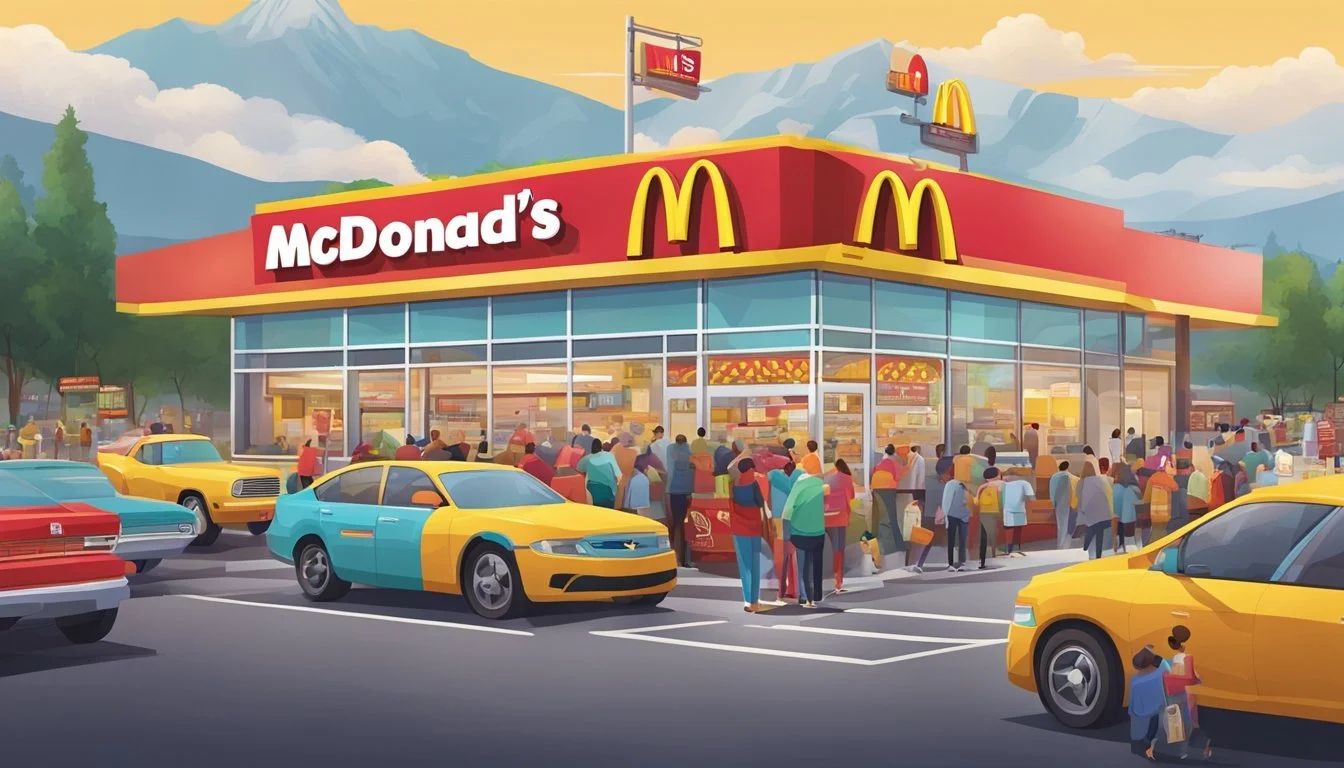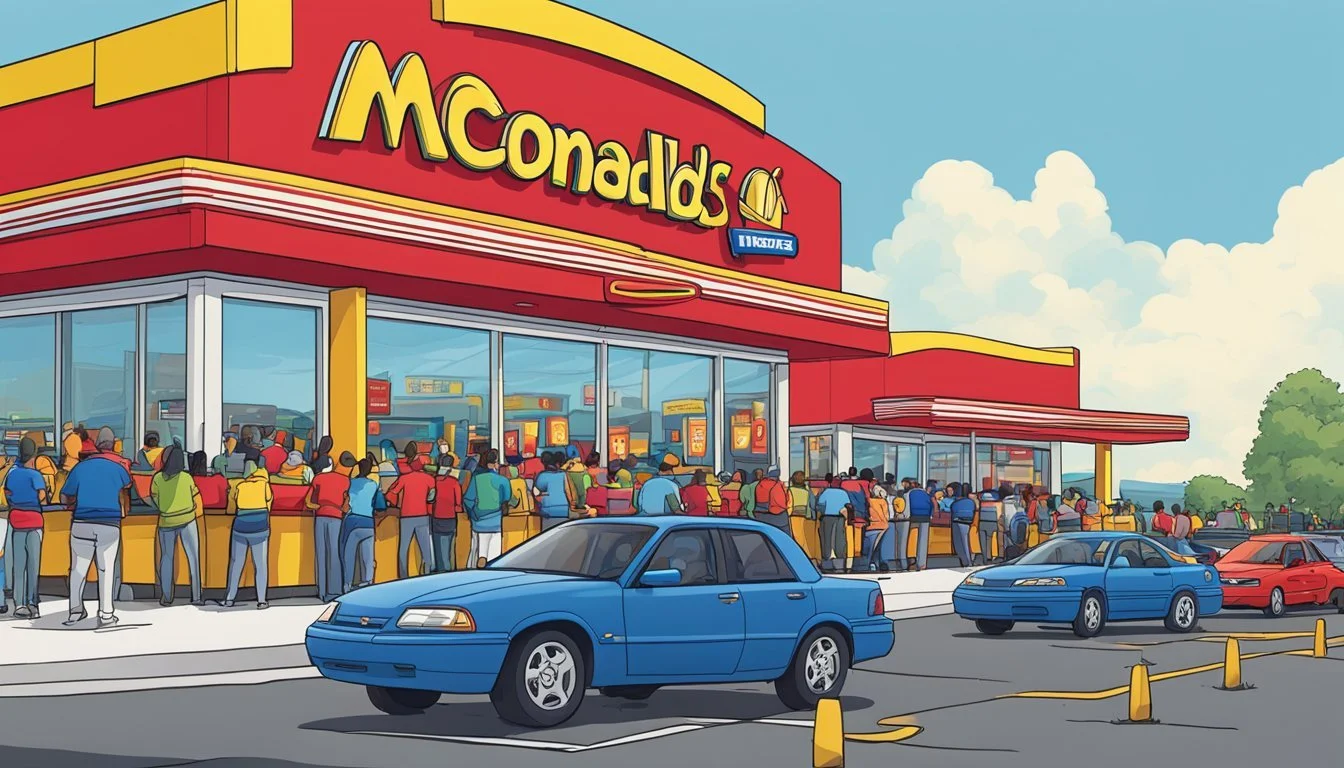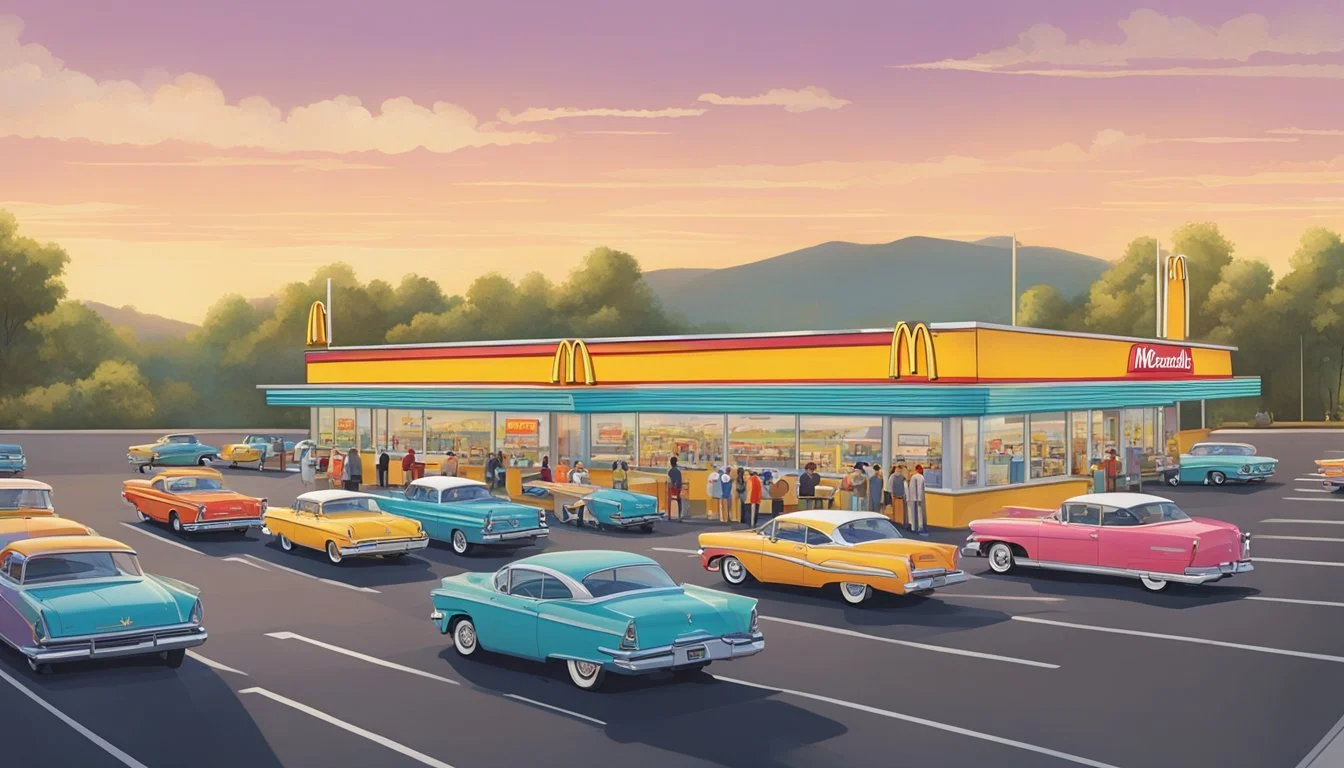McDonald's vs Sonic Drive-In
An Unbiased Comparison of America's Favorite Burgers
When choosing between McDonald's and Sonic Drive-In for a quick meal, customers are faced with two iconic American fast-food establishments. McDonald's, renowned for its widespread global presence and consistent quality, serves millions of diners daily with its efficient drive-thru service. On the other hand, Sonic Drive-In provides a unique experience with its drive-in format, where customers can enjoy their meals delivered by carhops, reminiscent of a bygone era.
These two chains, while both serving quick-service burgers, occupy distinct niches in the fast-food landscape. McDonald's has long been the quick-stop location for consumers seeking fast and familiar flavors, with its ubiquitous Big Mac standing as a stalwart of fast-food menus worldwide. In contrast, Sonic Drive-In promotes menu innovation and a more personalized dining experience, allowing customers to customize their orders from a variety of burger toppings and a slew of beverage combinations.
Crucial to their successes are not only their distinctive service models but also their adaptability to consumer preferences and market demands. While McDonald's focuses on convenience and the universal appeal of its offerings, Sonic tempts customers with customization and a more relaxed dining atmosphere without leaving their car. The question of which burger joint is better does not have a one-size-fits-all answer; it hinges on what the customer values most in their fast-food experience.
Historical Background
In evaluating McDonald's and Sonic Drive-In, it's imperative to consider their origins and the trajectory that led them to become staples in the U.S. fast food landscape.
The Rise of McDonald's
McDonald’s began as a single restaurant opened by brothers Richard and Maurice McDonald in 1940 in San Bernardino, California. The introduction of their "Speedee Service System" in 1948 revolutionized the fast-food industry through the concept of quick service and a limited menu, focusing primarily on burgers, fries, and shakes. McDonald's quickly became a symbol of fast, affordable food, leading to its massive expansion both nationally and internationally.
Sonic Drive-In's Establishment
Sonic Drive-In started its journey in 1953 when Troy Smith opened a small diner in Shawnee, Oklahoma. It distinguished itself with its unique service model, allowing customers to order via speakers from their cars and enjoy their meals delivered by carhops. Unlike the standard fast-food model pioneered by McDonald's, Sonic maintained the nostalgic appeal of the American drive-in, combining made-to-order fast food with a personal touch.
Menu Diversity and Signature Offerings
Menu diversity and signature offerings are pivotal factors influencing customer loyalty and preference in the fast-food industry. McDonald's and Sonic Drive-In each present a distinct array of products that cater to a wide audience, with certain items gaining iconic status.
McDonald's Menu Favorites
McDonald's has established itself with an array of famous burgers, including the Big Mac, a staple distinguished by its special sauce and middle bun, and the hearty Quarter Pounder, known for its juicy, beefy patty. Among the other notable items are cheeseburgers, universally recognized comfort food. McDonald's also competes with establishments like Shake Shack and Five Guys, but maintains its edge with its value offerings and localized menus—for instance, the Teriyaki Mac Burger in Japan.
Big Mac - Two beef patties, special sauce, lettuce, cheese, pickles, onions, on a sesame seed bun.
Quarter Pounder - A quarter pound of 100% beef with two slices of cheese, onions, pickles, mustard, and ketchup.
Cheeseburger - A classic option with a simple beef patty, cheese, onions, pickles, ketchup, and mustard.
Sonic Drive-In's Unique Selection
Sonic Drive-In sets itself apart with a drive-in format that harkens back to a classic American dining experience. They offer a range of unique burgers and sandwiches, such as the Sonic Cheeseburger with its customizable toppings and condiments, providing a direct challenge to the more traditional hamburger offerings seen at rivals like A&W and Carl's Jr. Additionally, Sonic's menu stands out with creative items like tater tots complementing their range of creamy shakes, posing competition to Dairy Queen's Blizzard.
Sonic Cheeseburger - A 100% pure beef patty with cheese, customizable with a variety of toppings.
Shakes - Creamy and thick, available in a multitude of flavors to suit any taste.
Burger Analysis
When comparing the burger offerings from McDonald's and Sonic Drive-In, it's essential to focus on the aspects of patty quality, bun freshness, and the range of toppings available to truly discern which burger joint stands out.
Patty Quality and Cooking Technique
McDonald's is well-known for their efficient grilling method, which ensures a consistent patty each time. The patties, used in popular items like the McDouble, are typically thin and cooked quickly on a flat-top grill. This contrasts with Sonic Drive-In, where the beef patties may have a more variable texture, as they're often prepared to order. Both joints cater to diverse preferences, with options like the Impossible Whopper at Burger King and protein-style burgers at In-N-Out illustrating the wider industry trend for variety in patty composition and cooking technique.
Bun Types and Freshness
The bun is a pivotal component of any burger experience. McDonald's usually serves their burgers on a standard sesame seed bun, offering a reliable texture and taste with products like the Big Mac. Sonic, on the other hand, may vary their bun choices more frequently, giving customers a diverse range from soft, classic white buns to more toasty options. Freshness is an area where both chains strive to deliver, as a stale bun can detract significantly from the overall enjoyment of the burger.
Toppings and Customization Options
Toppings are where Sonic shines, providing an array of choices from traditional lettuce, tomatoes, and pickles to more adventurous options like jalapeños and a variety of sauces. The level of customization at Sonic is notable, catering to customers’ specific desires. McDonald's tends to be more standardized with their offerings, like the well-known toppings on a Big Mac. However, they do allow for some customization in terms of condiments and basic ingredients. This contrasts with Burger King’s broad claim to fame for allowing customers to have it their way, especially with their signature Whopper.
Taste Test Comparisons
When determining which burger joint is better between McDonald's and Sonic Drive-In, the taste test comparisons via consumer feedback and culinary expert reviews provide valuable insights into the distinct flavor profiles and burger quality each brand offers.
Consumer Flavor Preferences
Consumers often compare McDonald's Big Mac and Quarter Pounder with Sonic Drive-In's variety of cheeseburgers. They typically highlight the Big Mac for its signature sauce and sesame seed bun, while the Quarter Pounder garners praise for its juicy beef patty that is seasoned just right. Sonic's burgers, on the other hand, receive commendations for their customizable options that allow for a plethora of toppings, leading to a more personalized taste experience. A recurring mention includes the classic Sonic cheeseburger, noted for its balanced flavor with cheese, fresh vegetables, and a warm, toasted bun.
Expert Culinary Reviews
Culinary experts provide a more nuanced understanding of the taste distinctions. They evaluate the burgers on a variety of criteria:
Meat Quality: Experts note that McDonald's uses a well-seasoned beef patty, especially in the Quarter Pounder, which they report as tasting fresher after McDonald's switch to fresh beef.
Burger Construction: The Big Mac with its two beef patties, special sauce, lettuce, cheese, pickles, onions, and a three-part sesame seed bun is often cited for its classic, yet unique taste profile that has become iconic.
Comparatively, expert reviews also often commend Sonic for its buttery buns and the option for diners to add a range of toppings like jalapeños and grilled onions, which can enhance the flavor of their hamburgers and cheeseburgers.
Through these taste test comparisons from consumers and experts, both McDonald's and Sonic Drive-In showcase their strengths, with McDonald's earning points for classic taste elements and Sonic for customization and variety.
Dining Experience
The dining experience at McDonald's and Sonic Drive-In offers distinct atmospheres and service models tailored to their unique branding. Customers find themselves choosing between the well-established fast-food efficiency of McDonald's and the nostalgic drive-in service at Sonic.
Ambiance and Theme
McDonald's prides itself on a universal, family-friendly environment. With a consistent and recognizable theme, its dining rooms are designed to be welcoming and efficient, focusing on getting diners in and out quickly. Sonic Drive-In, on the other hand, capitalizes on the novelty of its drive-in format, offering a more relaxed experience where customers can enjoy their meal from the comfort of their vehicle, evoking a classic Americana vibe.
Service and Speed of Ordering
Both restaurants offer a variety of ordering methods, but their approaches differ. McDonald's excels in fast-food efficiency with its drive-thru hailed as versatile, often having multiple lanes to minimize customer wait times. Sonic innovates with its diners ordering from stalls and having carhops deliver their food, blending tradition with modernity.
McDonald's caters to those seeking the quickest turnaround, while Sonic affords a bit of leisure, potentially appealing to customers in less of a rush. The speed of service at Sonic's drive-ins might not match the swift pace of McDonald's drive-thrus, but it compensates with a unique personal touch.
Nutritional Information
When comparing McDonald's and Sonic Drive-In, it's important to consider the nutritional content of their offerings, particularly regarding the caloric content of popular items and the availability of healthier alternatives.
Caloric Content of Popular Items
McDonald's:
Cheeseburger: Approximately 300 calories per burger
Big Mac: Around 540 calories per sandwich
Sonic Drive-In:
Cheeseburger: About 710 calories for a single cheeseburger
Supersonic Bacon Double Cheeseburger with Mayo: Typically contains 1,140 calories per burger
The caloric values of their hamburgers can vary greatly depending on the additions, such as extra cheese, sauces, and toppings.
Healthy Alternatives
McDonald's: Offers a variety of salads and has introduced healthier versions of classic items, such as hamburgers with less sodium.
Sonic Drive-In: Though better known for indulgent items, Sonic also provides options like grilled chicken sandwiches for those seeking lower-calorie choices.
Both chains have taken steps to provide nutrition information transparently, aiding customers in making more informed choices.
Customer Loyalty and Branding
In the competitive landscape of fast food, customer loyalty and effective branding are pivotal. McDonald's and Sonic Drive-In have crafted unique approaches to secure customer allegiance through marketing strategies and by offering perceived value.
Marketing Strategies
McDonald's has historically demonstrated a strong branding presence, establishing itself as a household name globally. With a marketing strategy that emphasizes quality, consistency, and customer experience, the brand has cultivated significant loyalty. Innovative moves, such as McDonald's MyMcDonald's Rewards, leverage technology to enhance customer engagement and retention.
Sonic Drive-In differentiates itself with a nostalgic drive-in experience which, paired with creative advertising, positions it uniquely in the market. Sonic's promotions often involve memorable campaigns that encourage customers to see the brand as more than just food, but as an experience worth returning to.
Customer Perceived Value
McDonald's perceives value through convenience and reliability. A survey by YouGov noted a 69% consumer trust rate in the United States for the brand, a testament to their dependable image.
In contrast, Sonic offers a value proposition that associates the brand with fun and innovation. Its drive-in concept adds a layer of perceived value that goes beyond the product and speaks to those preferring a unique dining environment.
Though not as prominently discussed as McDonald's and Sonic, other competitors like Burger King, BurgerFi, and Smashburger also focus on building customer loyalty and branding. Burger King's value proposition often hinges on a direct comparison to McDonald's, offering similar products with a twist. BurgerFi and Smashburger distinguish themselves with a focus on quality ingredients and sustainable practices, resonating with health-conscious and environmentally aware consumers. Each of these brands strives to differentiate itself within a saturated market to foster a loyal customer base.
Locations and Accessibility
When comparing McDonald's and Sonic Drive-In, two leaders in the fast food industry, a critical aspect to consider is how easily customers can access their services. This includes examining the breadth of their reach and the convenience of their locations.
National and International Reach
McDonald's boasts a significant global presence, operating in over 100 countries with approximately 40,000 locations worldwide, making it one of the most recognizable and accessible fast food restaurants on the planet. The brand's expansive network includes both stand-alone restaurants and venues inside malls, airports, and retail centers.
In contrast, Sonic Drive-In primarily caters to customers in the United States, with more than 3,500 locations. While Sonic may not have the international reach of McDonald's, it maintains a strong presence in the U.S., offering a distinctive dining experience with its drive-in format.
Convenience Factor
When it comes to the drive-thru experience, both establishments provide efficient service, but they operate differently. McDonald's runs a traditional drive-thru system that can be found at the majority of its locations, offering speed and consistency which have become the gold standard in the industry.
Sonic, on the other hand, operates on a drive-in model combined with a drive-thru in some locations. Sonic's drive-in setup allows customers to park in designated spots and place orders through an intercom system with the added option of carhop service. This model brings a unique convenience to diners who prefer to eat in their cars without having to queue in a drive-thru line.
Both brands capitalize on location and accessibility to serve millions of patrons daily, adhering to the fast food principle of convenience, albeit through differing service experiences.
Innovation and Market Trends
The fast food industry has been propelled by significant improvements in responding to consumer demands and integrating technological advancements.
Responding to Consumer Demands
McDonald's has recognized the essential role of the drive-thru, especially post-pandemic where 70 percent of its sales in top markets occurred through this channel. They have been adaptable and responsive, understanding that convenience and speed remain paramount for their customers. Sonic Drive-In, on the other hand, is praised for its innovative service model which allows customers to order from their cars, blending tradition with modern consumer expectations.
Technological Advancements
As part of their digital transformation, McDonald's has been investing in innovation to stay competitive in the fast food market. This includes initiatives like digital menus and mobile ordering systems which cater to a tech-savvy consumer base looking for a streamlined ordering experience. Sonic has been integrating culinary expertise with marketing knowledge for menu innovation, ensuring that technology serves their R&D pipeline sufficiently. Both brands recognize the need for continual technology-driven improvements to retain market share.
Conclusion
In comparing McDonald's and Sonic Drive-In, it becomes evident that each brand has its unique strengths. McDonald's is renowned for its versatile model and familiarity, boasting a consistent and quick service experience. It's a global powerhouse with an expansive menu catering to a broad audience.
Sonic Drive-In, on the other hand, offers an innovative drive-in experience, giving it a nostalgic edge. It differentiates itself with roller-skating servers and a retro vibe. Sonic's menu promotes variety, featuring unique drink combinations and a range of comfort food options.
When customers choose between these two fast-food giants, the decision often hinges on personal preferences:
Service Model: Drive-thru speed and efficiency at McDonald's versus the drive-in experience at Sonic.
Menu Variety: A more standardized menu at McDonald's against Sonic's extensive and customizable selection.
Innovation: Sonic's efforts to revamp the drive-in experience may appeal to those seeking something different from the standard drive-thru.
Each establishment offers a distinct take on the classic American burger joint. The choice depends largely on the consumer's value—whether that's convenience, experience, menu diversity, or innovation. As the fast-food landscape evolves, both McDonald's and Sonic Drive-In adapt in their own ways to stay relevant and competitive.










